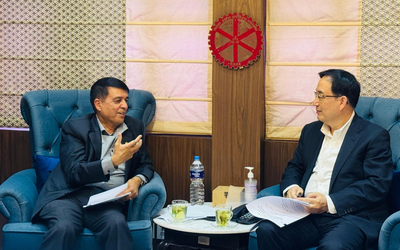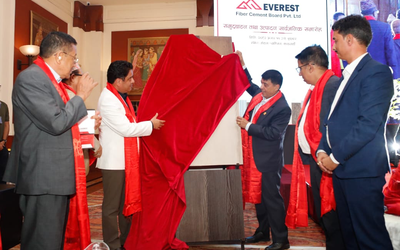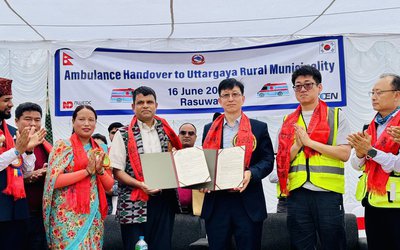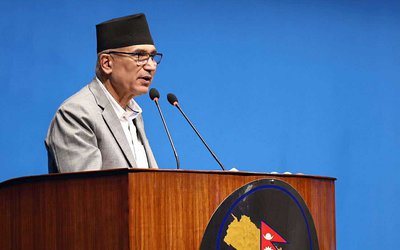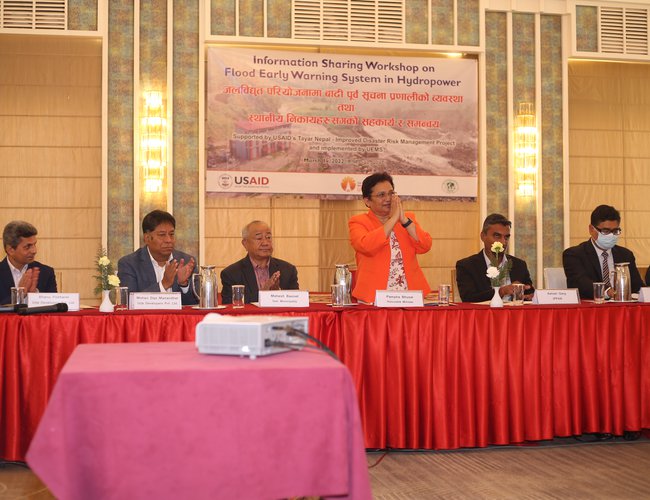
Although it has not damaged any hydropower power projects in Mai River basin in Ilam, the flood caused by unusual rain fall last September had caused a loss to the life and property along the Mai river basin.
As a most vulnerable of countries in terms of climate change, Nepal needs to prepare for future hazardous floods and rainfall which will likely damage infrastructure including hydropower projects of river basins.
Experts argue that the most important climate change effects impacting future hydropower generation are likely to be earlier snowmelt, change of runoff seasonality, and increasing frequency of extreme high- and low-runoff events. They said that climate change was going to create major problems for hydropower projects in Nepal including Mai river basin.
Given such a situation, the installation of Early Warning System along the river basin and circulating the information is a key to prevent damage and manage the risk.
This is what policy makers, power producers and experts expressed in Information Sharing Workshop on Flood Early Warning System in Hydropower.
Participated by the key stakeholders from the Disaster Risk Reduction and Management (DRRM) sector, high officials from Ministry of Energy, Water Resources and Irrigation, Department of Hydrology and Meteorology, Department of Energy Development, National Disaster Risk Reduction Management Authority (NDRRMA), USAID, DP-Net, llam Municipality, Mai Jogmai Rural Municipality, power producers, the half day seminar discussed on different aspects of a year-long project
Under the pilot project titled Development of a Collaborative Disaster Risk Reduction Mechanism for Hydropower Projects and Communities through EWS installation: A Pilot Project in Mai Beni Hydropower Project (9.5L MW), the study group conducted various aspects of floods and risk management, early warning system and role of central government, local government, communities and power producers.
As extreme rain patterns and GLOFs have already started to create havoc in river basin, the study reports published in the right time will make policy makers and other stake holders more aware.
Inaugurated by Minister of Energy, Water Resources and Irrigation Pampha Bhusal, the participants agreed with the study that the installation of early warning system in the river basin with close collaboration with local level and communities will be key to reduce the risk.
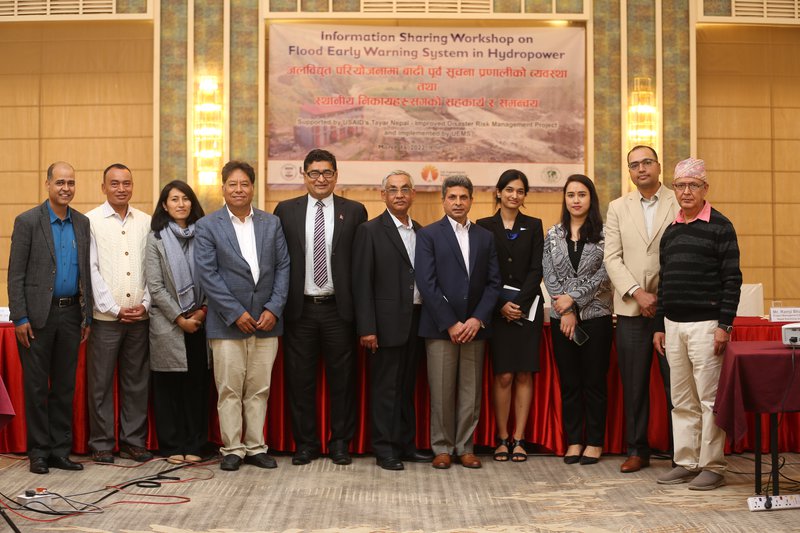
Implications on Policy
“Climate change risk management has gradually been a challenge for Nepal. The latest incidences in the country suggest the growing risk of climate change impact,” said Minister Bhusal.
“Rivers and low-lying settlements in the country seem more vulnerable to climate change impact. We have records of devastating losses from incidences of landslides and floods. The hydropower sector is among the hardest-hit ones by the consequences of natural disasters. We believe the scale of climate change impact is further increasing and countries most responsible for greenhouse gas emissions should ensure compensation to the nations having no contribution to or a minimal role to heating the planet,” said minister.
Speaking about possible consequences from a lack of safe hydropower projects and their implications on the nation’s economy, the Minister pledged that the Ministry would act for drafting required policies and guidelines and cooperating with several bodies for the climate change risk mitigation in hydropower projects.
She went on to say that this year, the country witnessed the off-season rains and their consequences that might have been caused by the climate change impact.
“We continue to work to come up with required policies, rules and build an atmosphere for promoting the domestic consumption of power produced at home and exporting to India,” said minister Bhusal.
As Nepal is endowed with high potential of water resources with 170 billion m3 annual runoff and 45,610 MW feasible hydroelectricity generations, formulation of mitigation and risk reduction strategy is a prerequisite.
Similarly, Nepal’s water resources covering 395,000 ha (48%) area within 45,000 km in length of 6000 rivers also cover vast areas of human settlement. Thus, the EWS system can make a lot of difference to prevent or reduce the risk of floods.
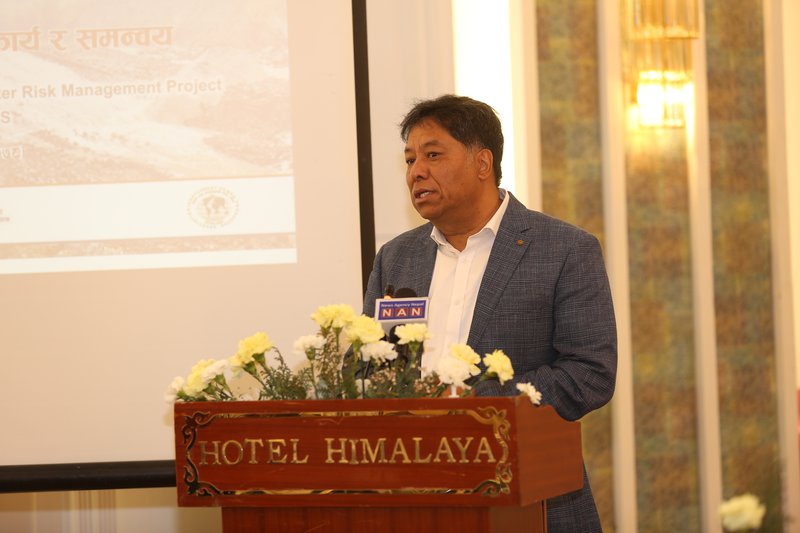
“Despite a pilot project, the outcome of the study is highly important for future policy formulation in disaster risk and reduction process. The study proves that EWS can significantly reduce the loss and damage of human settlement and hydropower projects,” said Anil Pokharel, CEO National Disaster Risk Reduction Management Authority (NDRRMA). “This pilot project has also shown that the collaboration between the local levels, community, IPPS is necessary to make EWS functional and effective. NDRRMA can use this in future policy formulation.”
Since 1911, 500 kW power generations at Pharping, Nepal’s capacity has now reached around 2000 MW. Nepal government has planned to increase its current access in electricity by increasing the generation 10000 MW by 2030, more hydropower projects are now in pipeline in different basin.
“The government has issued over 7000 licenses to private investors’ capacity to generate 600 MW. Nepal Electricity Authority has already signed PPA to purchase 6000 MW and other hydropower projects with capacity of 4000 MW are waiting for PPA,” said Bhanu Pokharel, managing director Urja Developers. “In this context, institutionalization of EWS process is key. This pilot study has revealed so many important benefits of EWS in prevention of disaster and minimizing the damage.”
As Hydropower is considered as a renewable clean energy, there is the need to construct dam to store water. This means the fluctuation of discharge of water in the rivers will have significant impacts.
The recent trends of fluctuation of water levels in the river particularly during the rainy season put all hydropower projects under high risk area. Thus the information sharing between upstream and downstream is necessary to monitor the level of water.
“Risk of floods and other natural disaster has greatly increased recently to the hydropower plants. Constructed with the huge investment, the government should provide us support to reduce the risk. In the last decades, IPPs like Upper Bhotekoshi and other smaller projects have already faced huge damage due to floods,” said Ashish Garg, vice president of IPPAN.
There must be communication channels between the project and community lying in the upstream and downstream. “As one of the objectives of the study was to install EWS and establish the close collaboration among local levels, local community and hydropower developers to reduce the damage to zero, this pilot study can be a game changer,” said Mohan Das Manandhar, Tayar advisor and expert director Urja Engineering and Management Solutions and urja developer. “During the course of pilot project, what we came to know is that there is no close link between risk reduction management and hydropower. In this sector the role of Department of Hydrology and Meteorology (DoHM) is highly important. By establishing metrological and hydrological stations and closely collaborating with hydropower developers and local level, it can make a difference. NDRRMA, IPPAN and the Ministry need to play more effective roles.”
“As the flood and landslides have been affecting hydropower projects and community living around it, this is a pilot study to analyze its implications. This can make model for other basin areas as well,” said Tirtha Raj Joshi, USAID representative.
Nepal’s topography offered more RoR types of hydropower and has more risk of landslide; flooding, GLOFs, LDOFs, and flash floods, there should be an effective institutionalized tool for disaster risk reduction. The study suggests that establishment of EWS can help to prevent the damage.
Collaboration of local level
Although Nepal has been practicing the EWS system for a long time, it is yet to show effectiveness. The pilot project has suggested the need to have close collaboration between local levels, local community, federal government and power produces in the EWS mechanism.
Ilam’s pilot project suggested that during the course of information sharing between upper stream and down streams, the local community’s involvement is the key. The community can play important role in timely sharing of information about the rainfall and levels of water in upstream with down streams.
“Ilam Municipality is happy to be a part of this pilot project. Establishing hydrological and rainfall stations in different parts of the Mai river and sharing information on it can reduce the risk,” said Mahesh Basnet, Mayor of Ilam Municipality. “EWS is all about the effective collaboration mechanism of information sharing with the involvement of all the stake holders to minimize the damage.”
Ilam Municipality is ready to work with all the stake holders including hydropower producer. Chairperson of Mai Jog Mai Rural Municipality Jeet Bahadur Rai also holds the view that close collaboration between the hydropower developers and community is necessary to make EWS effective.
“There are over dozens of hydropower projects in the Mai river with dams to reserve the water. The information about the flow of water level is key for hydropower to prevent the damage during the rainy season. They can secure all necessary information only through the support of concerned communities and local level,” said Chairperson Rai.
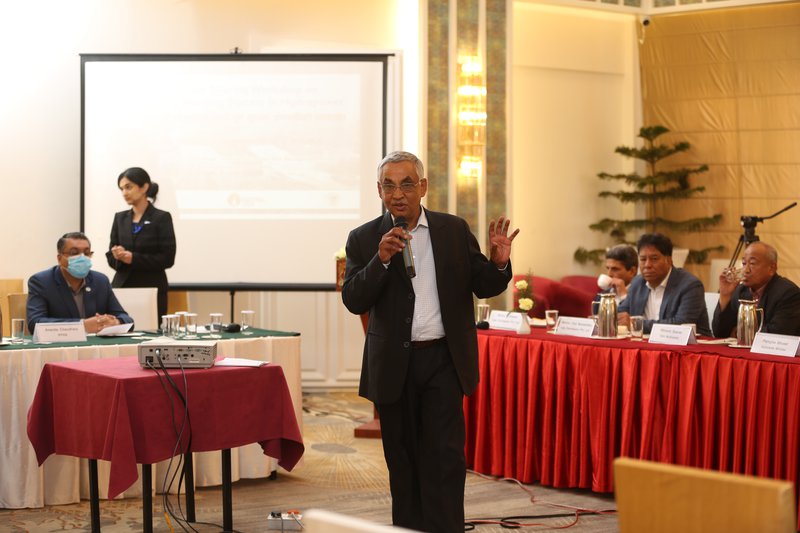
Discussion On EWS
Moderated by Purushotam Ghimire, a governance expert, the event heard the participants describing the importance of EWS on the basis of information shared by the Pilot Project and proposed community based information sharing system. “Based on our discussion with local level representatives, community leaders and hydropower promoters, we have proposed to model for EWS. One for Mai Flood Early Warning System, Information Mechanism for EWS for Ilam Municipality and Information Mechanism for EWS for Maijog Mai Rural Municipality,” said Ghimire.
“The information sharing mechanism of Ilam and Mai Jog Mai Rural Municipality is now operational,” said Ghimire. “Developed involving all different stake holders of the Ilam district, this will work at the time of risk.”
At a time when Nepal has focused on renewable energy, hydropower production, targeting 12000 MW by 2030 to fulfill its growing demand of 11,500 MW, many hydropower projects are under construction in different river basins. In this regard, sharing information on the water level, rain pattern is key to prevent the damage of big infrastructure.
As a sole government agency responsible for information sharing of weather pattern, rainfall and flood, Department of Hydrology and Meteorology (DoHM) has to play a greater role.
“The Department is ready to work with all stake holders to make our EWS more effective. Instead of talking about the single unit, there is the need to work in integrated manner for effective sharing of information and preventing the risk of hazard,” said Kamal GC, Director General of DoHM. “We have built several numbers of hydrological and meteorological stations in Mai river basin. Due to lack of coordination between power developers and DoHM, these stations are unable to share the information at the time of flood.”
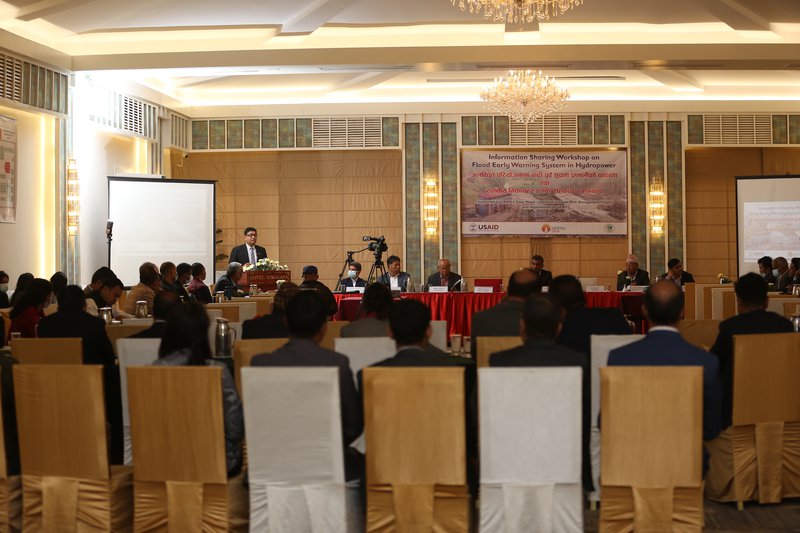
Nepal is one of the most vulnerable countries to climate change, water-induced disasters and hydro-meteorological extreme events such as droughts, storms, floods, inundation, landslides, debris flow, soil erosion, and avalanches.
According to a report, 22 districts are highly vulnerable in terms of landslide-prone areas, 12 districts to GLOF, and 9 for flooding. National communication report 2015 described an increasing trend of climate change from the energy sector. In the case of hydropower, the model projected lower dry season flows and thus lower energy availability.
As the economic costs of climate change in hydropower, agriculture, and water-induced disasters could be 2–3% of current GDP/year by midcentury, Nepal needs to be prepared to make effective early warning system.
Mai Khola basin study has shown that Nepal’s hydropower plants are highly vulnerable to the projected impacts of climate change. Whether the river basins fed by glacial melt water or rain based, the extreme weather patterns significantly increase the flood and disaster.
“At a time when the extreme weather pattern has been making the overall climate unpredictable with more floods, establishing Metrological and hydrological units with mobilizing the community and local level is best way to issue early warning and minimize risk,” said Dr. Ram Prasad Dhital, former executive director of Alternative Energy Promotion Center.
Promoter of Sanima Hydropower operator of Mai Khola Hydro Power Subarna Das Shrestha said that they have faced several crises in the last 20 years in the journey. “Our 3 MW plants in Sunkosi had been destroyed by flood. Having the experiences of Sunkosi, we have been collaborating with community, local level to make EWS mechanism effective.”
Executive Director of Water and Energy Commission Sarju Vaidya, former director general of DoHM, said that Nepal has now capacity to forecast the weather correctly. “We have now effective mechanism for flood and weather forecasting what is required is the coordination and cooperation among the stake holders including IPPS.
As most climate models predict significant changes in the dynamics of mountain glaciers, snowmelt, and precipitation as the climate warms, the directive produced by the project is valuable.
- MELAMCHI WATER SUPPLY: No Interruption During Monsoon
- Jun 25, 2025
- KOREAN RETURNEES: Successful Integration
- Jun 25, 2025
- UPPER TRISHULI-1: Engaging With Local
- Jun 25, 2025
- IME GROUP: Twenty Five Years Of Journey
- Jun 24, 2025
- NEPAL’S AIR POLLUTION: A Growing Health Concern
- Jun 24, 2025

